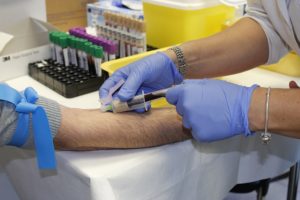
We all have experienced walking into a pharmacy to refill or get new medications and being asked about having a doctor’s prescription or not. Other times we must have easily purchased drugs that may not necessarily require a doctor’s prescription. Whatever the case, the fact remains that we must at some point come across prescription and non-prescription drugs.
Some drugs contain powerful actives that are likely to cause harm in different ways when abused. Others, although never to be abused, are not as high-risk as their former counterparts.
How do you know the drugs you should never purchase without a doctor’s prescription, and what makes them different from non-prescription drugs?
Keep reading to find out.
What are prescription drugs?
Prescription medicines are drugs that usually require a medical prescription to be obtained. They are usually referred to as strong drugs because of their high-risk nature. Some examples include opioids which are painkillers, depressants to relieve anxiety, and stimulants for treating hyperactivity disorders.
Prescription drugs usually have substances that are addictive and common to be abused, which many people use for nonmedical reasons. This is why it is legal that dispensing such drugs must be based on a medical prescription by a doctor, dentist, or professional healthcare expert.
What are non-prescription drugs?
Unlike prescription drugs, non-prescription drugs are over-the-counter (OTC) drugs safe for use without medical prescription. They come with detailed and simple information to enable patients administer such drugs themselves, reeling out measures for appropriate use. However, some OTC medications are also prone to be abused and may have to be kept behind the counter at pharmacies or require identification to be dispensed.
What are some differences between prescription and non-prescription medicines?
Besides the very obvious distinctions as already pointed out above, here are some discrepancies between both types of drugs:
- Wider safety margin
Although the pandemic of drug abuse is not limited to prescription drugs alone, OTC drugs have a wider safety margin than the former. This means that it is much safer for more consumers to use non-prescription drugs than otherwise.
- Peculiarity of medicines
Prescription drugs, unlike OTC drugs, are peculiar to specific persons and tailored to address certain illnesses. Non-prescription drugs, on the other hand, can be administered to various people for common health issues, for instance, cough medicine and low dosage painkillers.
- Severity of illness
While OTC drugs are usually used to treat minor ailments, prescription drugs are given for more intense illnesses and diseases like cancer and other sicknesses that require to be combated with stronger prescriptions.
- Cost of medication
Prescription medicines are usually more expensive than non-prescription drugs. This is so especially when they are non-generic drugs targeted at specific diseases like certain infections and the likes.
Now you know the difference between both categories of medications. Both prescription and non-prescription drugs can be purchased in any safe pharmacy, whether online or physically. All you need is to ensure you purchase your drugs from duly licensed and registered pharmacies that offer the best professional pharmaceutical services.
John Davis is a seasoned health journalist with expertise in public health and medical research. Holding a degree in health sciences, John excels in making complex health topics understandable and engaging for his readers. His articles, featured in top health publications, cover everything from cutting-edge treatments to public health policies. Outside of journalism, John is an advocate for health education and frequently speaks at community events.





